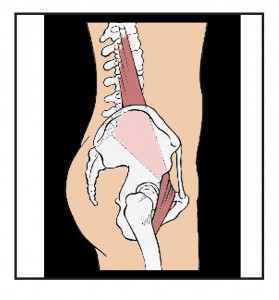 It’s all about the psoas. A psoas major muscle in good working order is the engine that drives the body. When we are walking well the psoas initiates movement forward rescuing the body from imminent fall over and over again. A very wise student who also happened to be named Wise made an off-hand comment to me during a yoga class I was teaching many years ago. One day in class I was babbling on in my way when she looked at me and said: “You have to realize that the psoas is a back-body muscle.”
It’s all about the psoas. A psoas major muscle in good working order is the engine that drives the body. When we are walking well the psoas initiates movement forward rescuing the body from imminent fall over and over again. A very wise student who also happened to be named Wise made an off-hand comment to me during a yoga class I was teaching many years ago. One day in class I was babbling on in my way when she looked at me and said: “You have to realize that the psoas is a back-body muscle.”
A few years I began to understand what she meant and that awareness is now the cornerstone of what I teach. The psoas major connects at the back of the inner thigh and along the lumbar vertebrae. If the legs are directly under the hips the psoas is pulled into natural tension moving forward from the inner thigh to cross the pelvis and back again to connect to the lower spine. This tension is what creates and maintains the lumbar curve.
It also helps in keeping the spine upright over the pelvis because when the psoas major tones across the pelvis pulling the lumbar vertebrae forward and down, the erector muscles of the spine lengthen up to support the head above the shoulders. This is the pulley action that I have written about before. A pulley is a simple machine that allows the rope that encircles it to generate force. The hip bone is the pulley and the psoas is the rope. This pulley action only happens if the psoas major is situated at the back of the body both above and below the pelvis.
If we tuck the pelvis and allow the thighs to move forward of the hips the psoas is no longer a back-body muscle and we lose all of the good energy that is created by simply aligning the psoas correctly.
***
